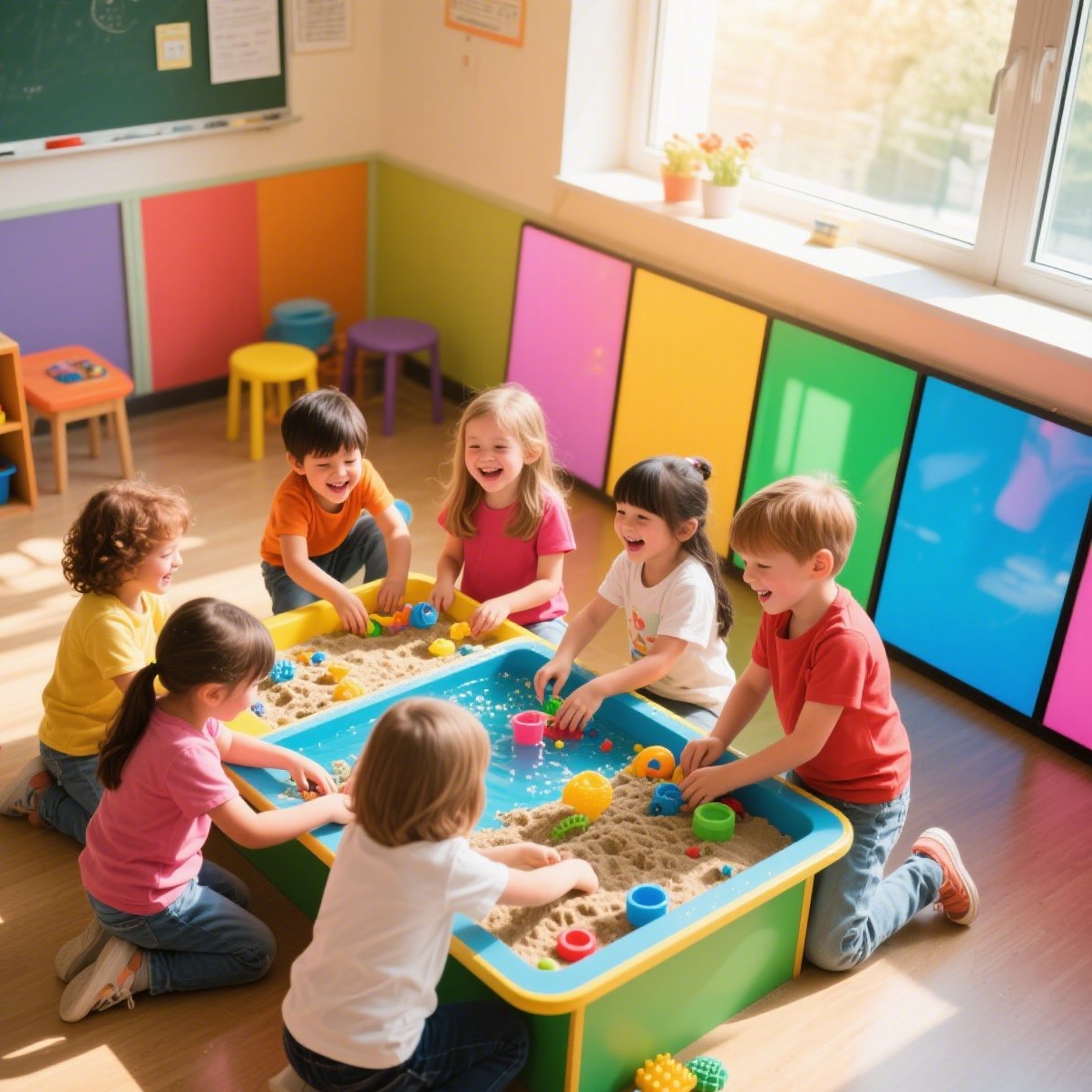In a world filled with screens and fast-paced learning, engaging children in simple sensory activities can be a powerful way to support their development. Sensory play isn’t just about fun—it’s a vital part of how children learn about their environment, develop motor skills, and build emotional resilience. Whether you’re parenting a toddler or guiding a pre-teen, there are countless sensory activities for kids of all ages that can be easily done at home or in the classroom.
The Science Behind Sensory Play
Sensory learning is rooted in neuroscience. When children touch, taste, smell, see, or hear something new, their brains form connections that support language development, memory retention, and problem-solving skills. Sensory play also aids in fine motor and gross motor skill development —from the coordination required to scoop beans to the balance needed to stomp on bubble wrap.
Furthermore, engaging in sensory-rich experiences helps children manage stress, regulate their emotions, and develop social skills. These activities stimulate the vestibular (balance), proprioceptive (body awareness), and tactile (touch) systems, which are essential for overall physical and emotional development.
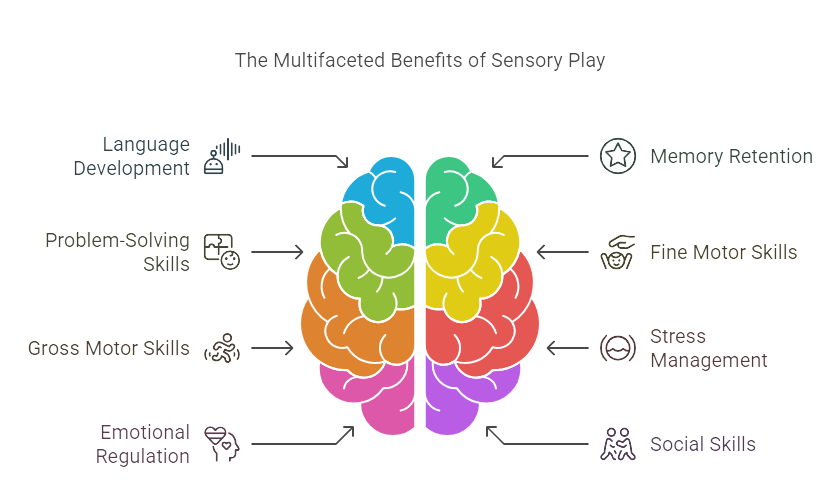
Sensory Activities for Toddlers (Ages 1–3)
At this early age, toddlers explore the world with all their senses. They are naturally curious and eager to investigate textures, sounds, and movement.
Best Sensory Activities for Toddlers:
- Water Play: Fill a tub with warm water and give toddlers cups, spoons, and sponges. Add a few drops of food coloring for visual stimulation.
- Texture Bins: Fill plastic containers with dry pasta, rice, beans, or cotton balls. Let them scoop, pour, and run their fingers through the materials.
- Edible Finger Paints: Mix yogurt with natural food coloring for a safe, colorful painting experience.
- Bubble Wrap Stomping: Lay bubble wrap on the floor and let toddlers walk or crawl over it for satisfying tactile and auditory feedback.
These simple sensory activities build coordination, stimulate curiosity, and foster independent play.

Sensory Activities for Preschoolers (Ages 3–5)
Preschoolers are developing language and cognitive abilities, and sensory play can enhance these skills while encouraging creativity and experimentation.
Engaging Sensory Activities for Preschoolers:
- Scented Playdough: Add essential oils like lavender or peppermint to homemade playdough for a calming or energizing effect.
- Kinetic Sand: A wonderful tool for strengthening hand muscles and promoting creativity. Children can build shapes, letters, or imaginative worlds.
- Sound Jars: Fill small jars with different materials (buttons, rice, beads) and let kids guess the contents by shaking them.
- Ice Cube Painting: Freeze colored water in ice cube trays with craft sticks. Kids can “paint” on paper as the cubes melt.
These activities help preschoolers refine their fine motor skills and support their cognitive development through hands-on learning.
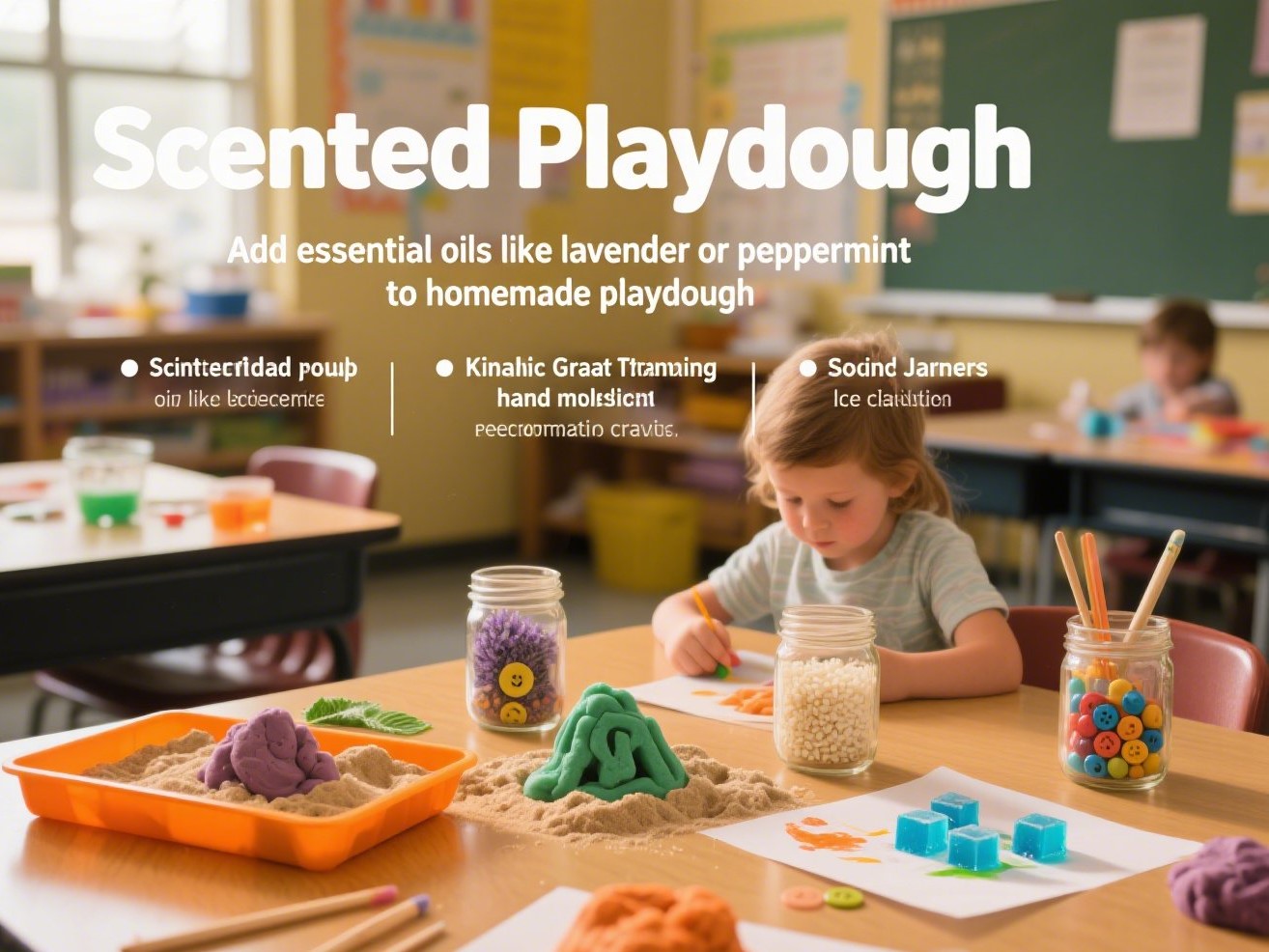
Sensory Activities for School-Aged Children (Ages 6–12)
Older kids benefit from sensory activities that challenge their minds and help them regulate their emotions, especially during periods of stress or overstimulation.
Fun Sensory Ideas for School-Age Kids:
- DIY Slime or Oobleck: These classic science-based sensory experiments are both educational and entertaining.
- Sensory Scavenger Hunt: Create a list like “something rough,” “something that smells sweet,” or “something cold.” This encourages mindful exploration.
- Nature Walks and Observation Journals: Let kids collect leaves, rocks, or flowers and sketch or write about them afterwards to engage multiple senses.
- Scented Relaxation Jars: Fill a jar with glitter, water, and a few drops of essential oil. These jars can be used for calming down or meditation.
These sensory play activities support focus, mindfulness, and emotional growth during the formative middle years.
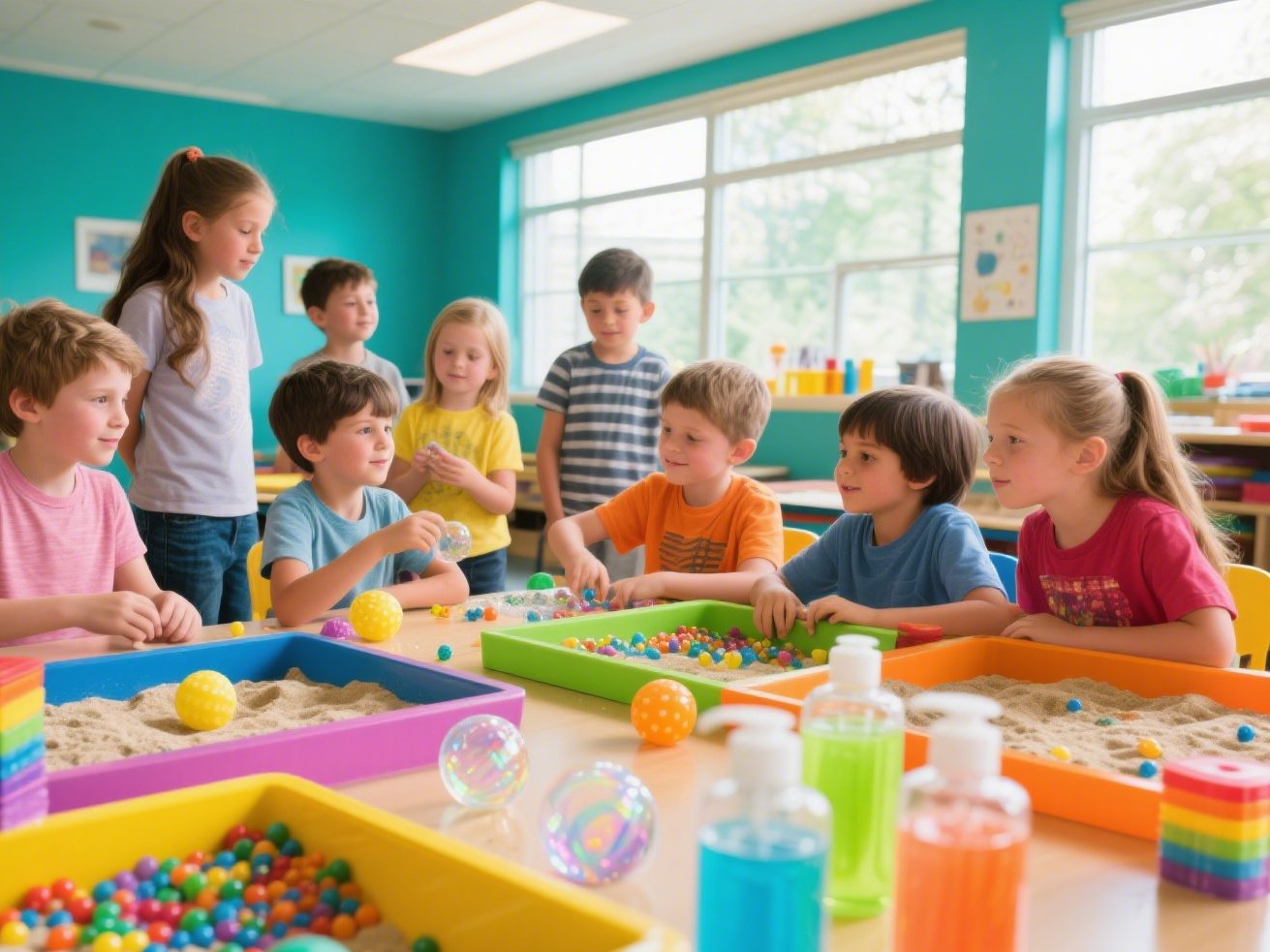
Inclusive Sensory Activities for Kids with Special Needs
Children with sensory processing disorders , autism , or ADHD may find certain sensory inputs overwhelming or soothing. Thoughtfully designed sensory play can be therapeutic and help them engage with the world more comfortably.
Inclusive and Calming Sensory Activities:
- Weighted Blankets or Lap Pads: These provide deep pressure input that can help calm anxious or overstimulated kids.
- Visual Sensory Bottles: Clear bottles filled with water, glitter, and small toys can mesmerize and help regulate emotions.
- Deep Pressure Activities: Rolling in blankets, pushing against walls, or crawling through tunnels can help kids feel more grounded.
- Music and Rhythm Games: Use drums, shakers, or clapping patterns to help kids express themselves and improve focus.
By tailoring sensory activities for special needs , parents and educators can provide inclusive and supportive learning environments.
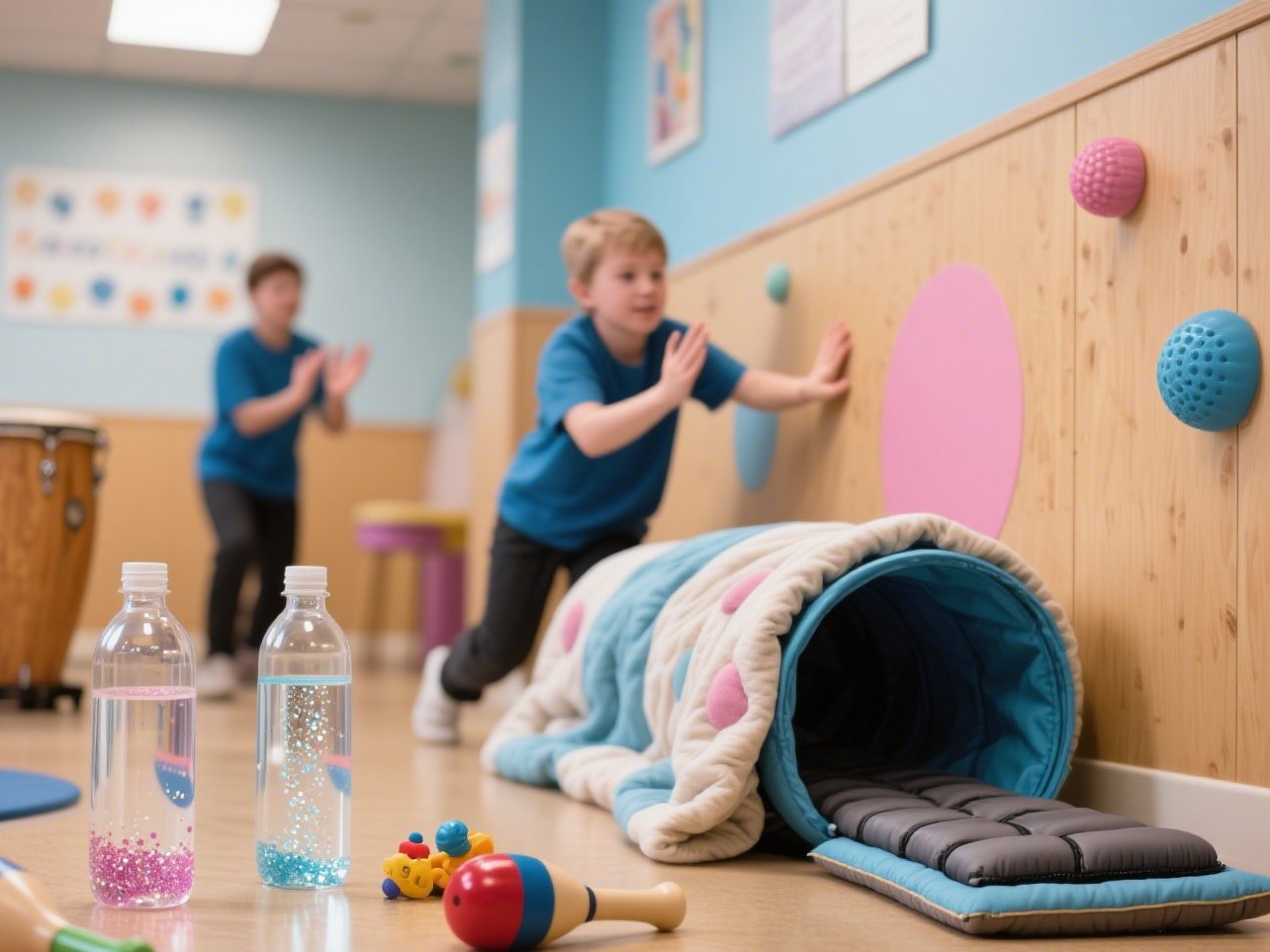
DIY Sensory Materials and Safety Tips
Creating your own sensory play materials is easy and affordable. Common household items—like rice, flour, cotton balls, and shaving cream—can be transformed into engaging tools for play.
Tips for Safe Sensory Play:
- Always supervise young children to prevent choking or ingestion of unsafe materials.
- Use non-toxic and hypoallergenic ingredients, especially for children with allergies or sensitivities.
- Wash hands before and after sensory play.
- Rotate activities to keep them fresh and stimulating without overwhelming kids.
With minimal prep, parents can offer rich and varied sensory experiences at home.
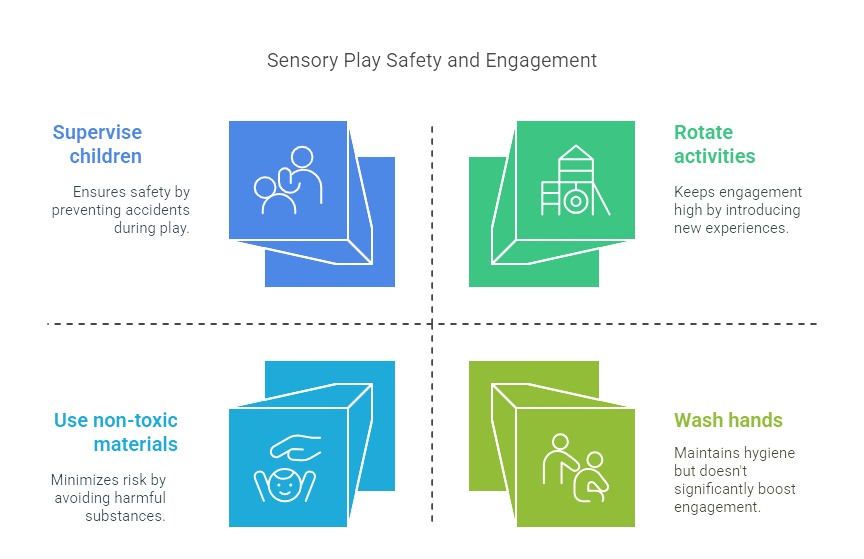
Making Sensory Play a Daily Habit
Incorporating sensory play into daily routines doesn’t require a huge time commitment or special materials. Even five to ten minutes a day of focused sensory play can have lasting developmental benefits.
Ideas to Integrate Sensory Learning:
- Create a small sensory bin corner or calming station in your home.
- Use sensory elements during chores (eg, feeling the texture of different vegetables while cooking).
- Wind down with a sensory activity like a lavender-scented bath or soft music before bedtime.
Consistency is key. Over time, children begin to self-regulate better, show improved focus, and build confidence through sensory exploration.
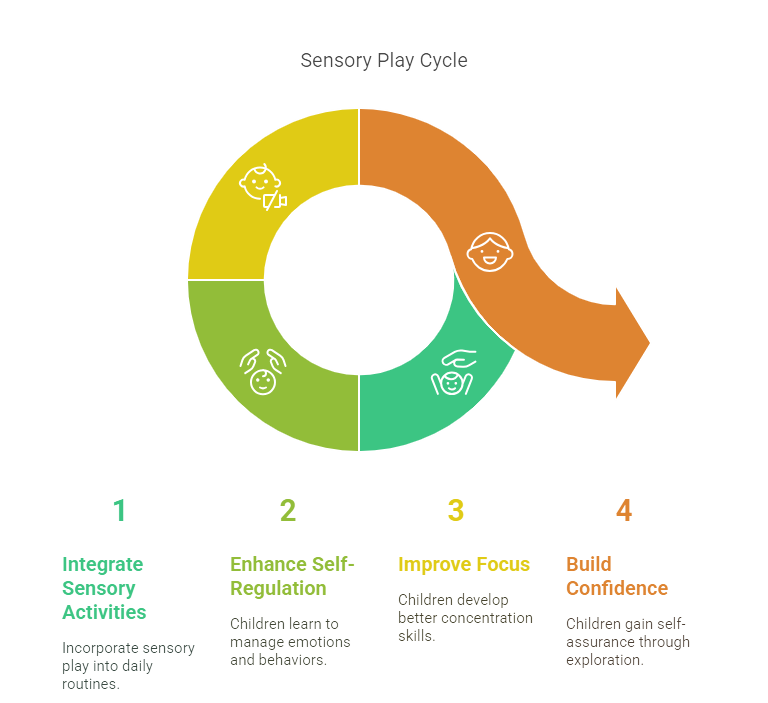
Conclusion
Sensory play is more than just messy fun—it’s a foundational part of child development that supports learning, self-expression, and emotional well-being. From a toddler splashing in water to a 10-year-old journaling after a nature walk, simple sensory activities offer enriching experiences that grow with your child.
Parents, educators, and caregivers are encouraged to embrace the power of sensory learning . It’s easy to get started, and the rewards—joy, growth, calm, and connection—are well worth it.

